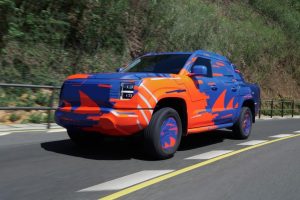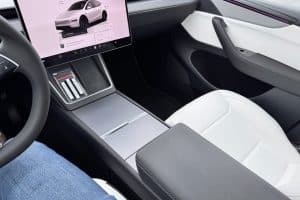A Tesla Model 3 electric sedan pulled a Nissan Patrol SUV from being stuck in the desert sands of Dubai, proving the all-electric powertrain had more than enough strength to dislodge the four-wheel-drive tank from trouble.
A video shared by @TeslaOwnersSiliconValley shows the Model 3’s impressive towing capabilities despite its small size. What is even more impressive is the towing capacity of the Model 3 is far lower than the weight of the Nissan Patrol, which is one of the Japanese automaker’s heaviest vehicles, weighing in at over 3,300 pounds, or 1,500 kilograms.
Tesla indicates that a Model 3 with its high strength steel tow bar can tow up to 2,000 pounds, or 910 kilograms. However, the Model 3 in this video dislodged the Patrol SUV with ease, pulling it from the awkward terrain of the desert and then pulling it about a hundred yards through the sand.
The cause of the easily-dislodged Nissan could be the Tesla Model 3’s torque vectoring capabilities, which allows a differential to transfer engine torque to each of the vehicle’s wheels. It is not a fixed system as the vectoring capabilities allow the motor to determine which wheels the energy needs to be transferred to. This allows for a more controlled and efficient use of energy, whereas a wheel that is off the ground in uneven terrain will not spin due to the fact that it won’t assist in moving through sand or dirt.
The torque vectoring that helps Tesla vehicles maneuver with ease through tough terrain is most evident in a recent off-road challenge, where the Model X easily navigated through a course with a Dacia Duster and Hummer H1. The Model X had little to no issue making it through constant terrain changes, while the Hummer and Duster dealt with maneuverability issues.
Torque vectoring was added to the Model 3 when the company’s Track Mode was released in 2018. Tesla doesn’t refer to the feature as “torque vectoring,” though, and instead, it uses a Vehicle Dynamics Controller that works to allow rotation of the vehicle’s body through controlling wheel spin. This is advantageous for handling sharp corners or drifting in an all-electric car if the opportunity presents itself in a controlled setting.
The age-old theory that electric cars cannot handle towing or power through tough terrains has been debunked many times. However, for those who still are skeptical, the video above is simply another example of an all-electric powertrain doing its fair share of proving the doubters wrong.
Original Publication by Joey Klender at Teslarati.
Want to buy a Tesla Model 3, Model Y, Model S, or Model X? Feel free to use my referral code to get some free Supercharging miles with your purchase: http://ts.la/guanyu3423
You can also get a $100 discount on Tesla Solar with that code.





